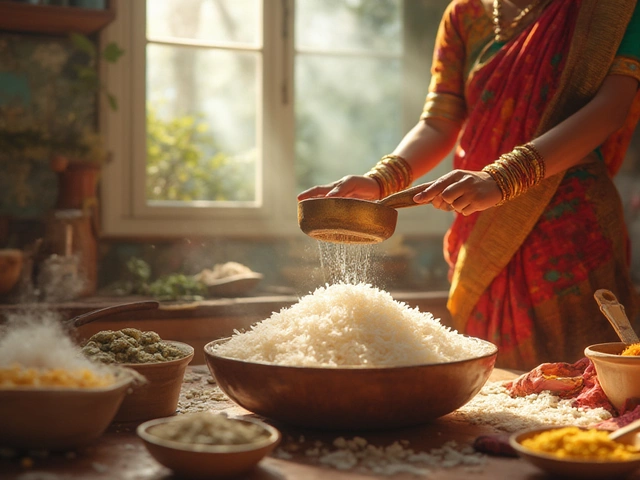Indian Spices: Flavor Boosters You Need in Your Kitchen
Indian cooking is famous for its bold flavors, and the secret behind most dishes is the spice mix. Whether you’re a beginner or a seasoned chef, knowing a few key spices can transform a plain meal into something memorable. Below are the must‑have spices, why they’re good for you, and practical ways to add them to your daily recipes.
Top Five Everyday Indian Spices
Turmeric – The bright yellow powder that gives curry its color. It’s packed with curcumin, an antioxidant that supports joint health. Add a pinch to soups, rice, or even smoothies for a subtle earthy taste.
Cumin – With its warm, nutty flavor, cumin works great in both whole seed and ground form. Roast the seeds first to bring out their aroma, then toss them into stews or sprinkle ground cumin over roasted veggies.
Coriander – Fresh leaves (cilantro) and dried seeds have very different profiles. The seeds are citrusy and sweet, perfect for spice blends like garam masala. Use them in dals, marinades, or pestos.
Mustard Seeds – Small but mighty, they pop when heated in oil, releasing a sharp bite. Add them to pickles, temper dals, or fry them with onions for a quick flavor boost.
Red Chili Powder – For heat lovers, this spice adds spice without the texture of fresh chilies. Adjust the amount to suit your tolerance and mix it into sauces, gravies, or even sprinkle on popcorn for a daring snack.
Practical Tips for Using Indian Spices
1. Toast Before You Use – A quick toast in a dry pan for 30 seconds awakens the oils in whole spices. This step makes the flavor pop and prevents bland dishes.
2. Store Properly – Keep spices in airtight containers away from sunlight. A dark cupboard or a pantry drawer works best. This keeps the aroma fresh for up to a year.
3. Mix Your Own Blends – Combine equal parts cumin, coriander, turmeric, and a pinch of chili powder for a quick all‑purpose curry powder. Add a dash of garam masala for extra warmth.
4. Use Small Amounts First – Spices are potent; start with a little and taste as you go. You can always add more, but you can’t fix an over‑spiced dish easily.
5. Pair with Fresh Elements – Balance the strong flavors with fresh ingredients like lemon juice, ginger, or yogurt. This creates a harmonious taste that isn’t overwhelming.
Now that you know the basics, try a simple recipe: sauté onions and garlic in oil, add a teaspoon each of turmeric, cumin, and coriander, then pour in a can of diced tomatoes. Let it simmer and serve over rice or with flatbread. In under 20 minutes you’ve got a flavorful, health‑rich meal that showcases the power of Indian spices.
Remember, the best way to master spices is to experiment. Swap one spice for another, adjust the heat level, or blend fresh herbs into your mixes. With a few staple spices and these practical tips, you’ll be able to bring authentic Indian taste to any dish you make.
What Plant is India Famous For? Tea, Spices & More Icons Explained
Curious about the plant that put India on the global map? Explore India's legendary tea, the spice story, and the deep roots of famous native plants.
About
Gardening
Latest Posts


Can You Grow Rice in America?
By Alden Thorne Feb 28, 2025

How Much Rice Does 1 Cup Make? Unpacking Dry to Cooked Ratios for Perfect Meals
By Alden Thorne Jul 20, 2025

Can I Just Put Perlite on Top of Soil? Here's What You Need to Know
By Alden Thorne Mar 11, 2025
